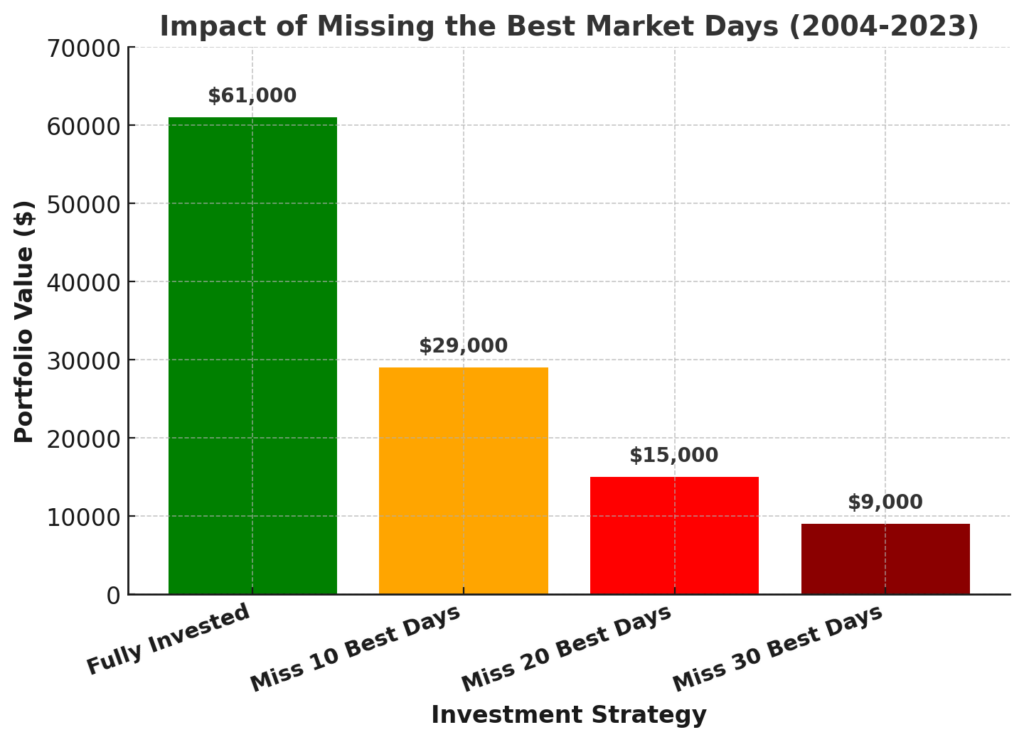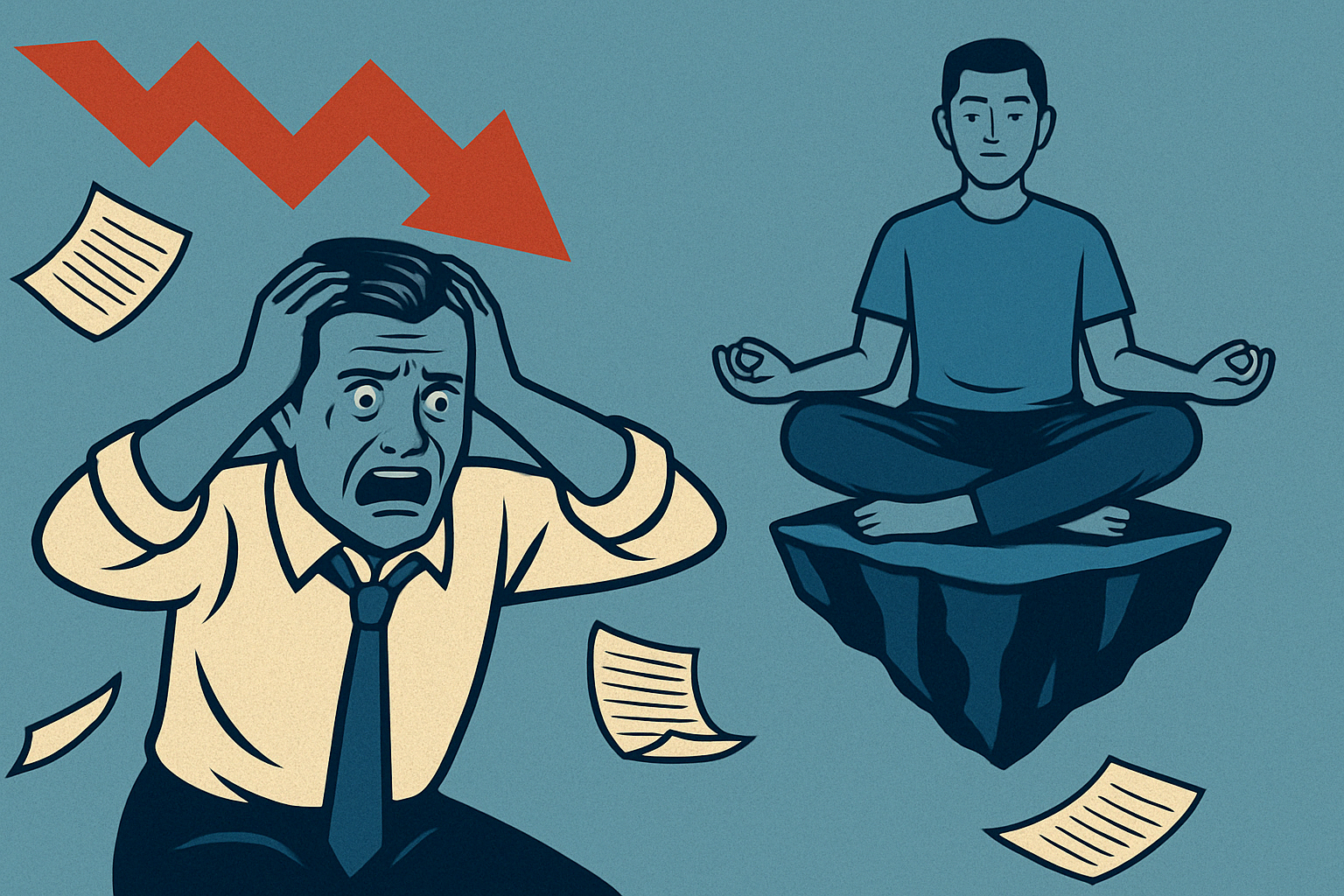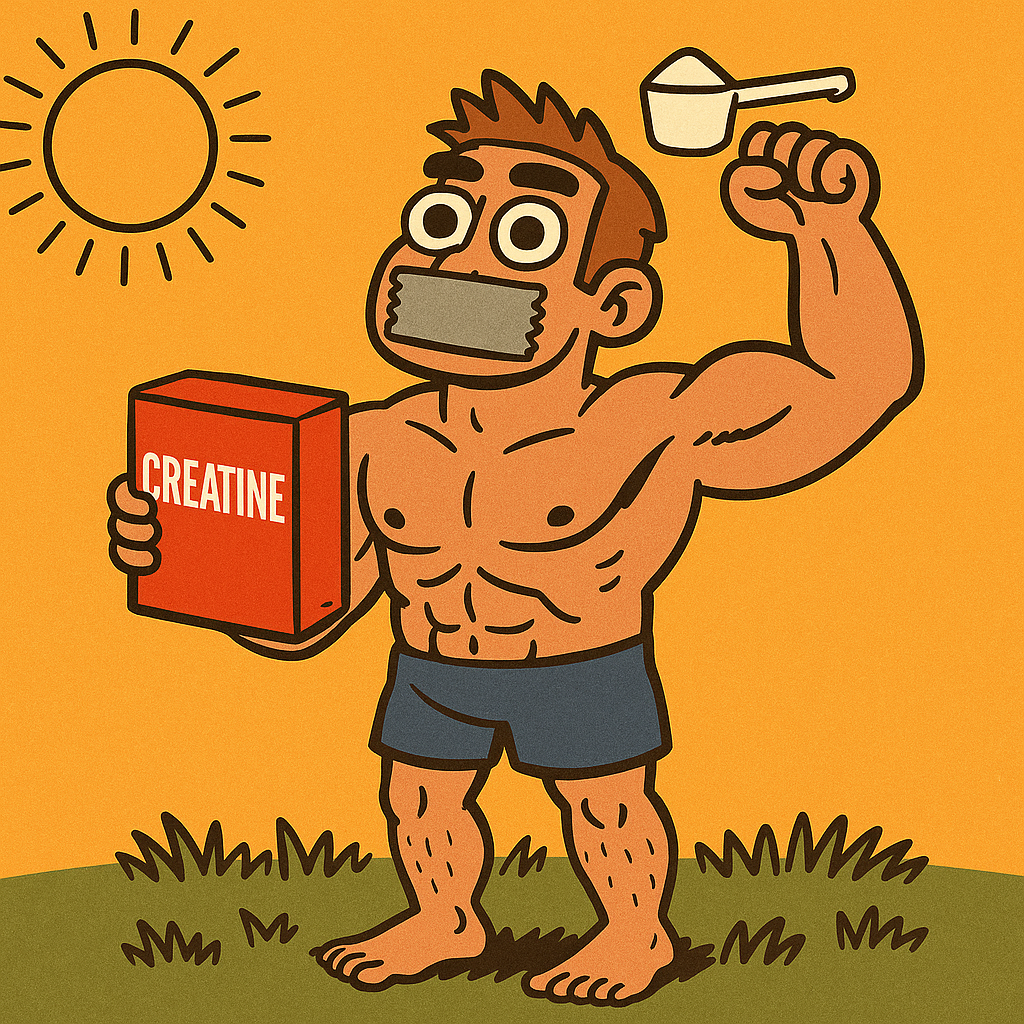When the markets are tumblin’, the texts start a-comin.
Like clockwork, my phone blows up with panicked messages – friends, family, former colleagues – all with that same anxious tone of financial dread…
“If someone had cash on the sidelines, would you buy or just wait the weirdness out?”
“With all the tariffs, won’t the market likely sell off b/c of all the uncertainty? Would you ever consider dropping all major positions and then repurchasing them later?”
And as the markets have continued to go down, the more dire, “Couldn’t this all go to zero? Should we just… sell everything?”
Here’s my thinking on those questions – and more – and let’s start with some facts.
Yes, this is more or less a “correction”. And that’s OK.
A correction is when a broad index has dropped 10%-20% from a recent peak.
As of March 19th, 2025, the S&P 500 had dropped about 9.5% from its Feb. 2025 peak, and the Nasdaq had dropped 14% from the same period.
So if it feels like your portfolio, 401k, or SEP IRA has gotten crushed recently, it has!
You are not alone.
We are all logging in and thinking the same thing: close the freaking market!
But before we totally freak out, let’s just look at history a bit.
From 1950 to 2023, the markets have averaged a bit over 1 “correction” per year; in the more recent 20ish years, we’ve averaged more like 1.8 “corrections” per year.
So not only is it “OK” – it’s to be expected.
A quick GPT search of the more recent “corrections” and their news-byte headlines include:

This feels unique, but it’s not
Although it FEELS like today’s headlines are uniquely wild – a President with unexpected policy zigzags, government agencies named after crypto memes, trade wars erupting overnight, and tariff announcements that send markets into tailspins – in fact, nothing is completely new.
Markets have seen political curveballs and economic plot twists throughout history.
In the 60s, people thought the world was coming apart—JFK was assassinated, civil rights protests rocked the country, the Vietnam War escalated, inflation surged, riots erupted.
In the mid 1970s, there was Watergate, an oil crisis, stagflation, and a rising crime rate that made most Americans think our country was in decline.
The early 2000s brought 9/11, wars in Iraq and Afghanistan, and the dot-com crash, and then in 2008, the housing market collapsed, banks failed, unemployment soared, the global economy teetered on the edge.
Every era feels uniquely chaotic when you’re living through it, but history reminds us that crisis and progress go hand in hand.
As Mark Twain said, “History doesn’t repeat itself, but it often rhymes”.
Then why not just sell & wait out the bad times?
It seems easy enough, right?
Just sell now – and at some point in the future, buy back into the market, and we can all just avoid the stress & anxiety of this effing downturn?!
Here’s the problem: The market doesn’t send out invitations for its best days.
They show up randomly, usually when everything feels awful, and if you’re sitting in cash, you miss them.
Most people mistakenly believe they can just “get back” in the market and be fine, but in actuality, the market has the biggest gains in a very small number of days per year – so if you “miss” those days because you’re on the sidelines, you totally eff yourself by trying to play it safe.
Days in Market: My Favorite Statistic
From 1993 to 2023, if you stayed fully invested in the S&P 500, your average annual return was about 9-10%.
But if you missed just the 10 best days in the market, your return dropped to around 5%.
Miss the 20 best days? Your return shrinks to about 2%.
Miss the 30 best days? You’re basically flat.
And here’s the kicker—the biggest up days tend to happen during the worst downturns, when people are most likely to be sitting on the sidelines in cash.
Here’s another way of saying it:
- Fully Invested: A $10,000 investment in the S&P 500 grew at an annualized return of 9.8%, resulting in approximately $61,000 by the end of 2023.
- Missed 10 Best Days: Missing the 10 best days reduced the annualized return to 5.6%, with the investment growing to about $29,000.
- Missed 20 Best Days: Missing the 20 best days further decreased the annualized return to 2.0%, with the investment growing to approximately $15,000.
- Missed 30 Best Days: Missing the 30 best days resulted in a negative annualized return of -0.9%, with the investment decreasing to around $9,000.
And finally, since it often helps to visually see things:

Source: Motley Fool Wealth Management.
Some of the market’s biggest comeback days happen when things are the most volatile—often right after a major drop.
Trying to time the market by pulling out when things look bad and jumping back in later can mean missing those key rebound days.
That’s why, for long-term investors, sticking to a steady strategy usually works out better.
Goalkeepers, Penalty Kicks, & Standing Still
Action bias is the tendency for people to feel like they must do something – anything – especially in uncertain or high-stakes situations.
Sitting around like a donkey feels unbearable, even when inaction might be the smartest move.
This is deeply wired into our core human psychology; we associate action with control and progress, even when the best strategy is patience.
Lemme give you a little non-investing example: research has shown that goalies jump to the left or right most of the time during PKs, even though statistically, staying in the center gives them the best chance of stopping the ball.
Why? Because standing still feels wrong—it looks like they aren’t trying. But ironically, doing “nothing” (staying in place) would lead to better outcomes.
The same thing happens with investing.
In investing, action bias makes people want to sell during crashes, chase trends, or constantly tweak their portfolios because it feels like rich, successful investors must be making bold moves.
But in reality, the most successful investors often win by doing… nothing.
They sit tight, let time and compounding work, and avoid panic-driven decisions.
My COVID Confession
I remember during COVID – I was staring at a portfolio I’d spent my entire 20’s and 30s building, after a decade-plus of grinding, saving, and religiously investing.
For the first time in my life, I had serious money on the line.
When the market crashed, my stomach dropped.
That primal urge to hit the sell button – the same one I watched infect even the most level-headed investors around me – hit me like a wave.
Writers, podcasters, people that were normally reasonable, were all selling, hitting the panic button and declaring this pandemic an unnatural event that warranted a new, novel selling strategy.
But as hard as it was – I didn’t sell a single stock.
I forced one rule on myself and that was that I was NOT allowed to log into my Schwab account.
I didn’t break that rule – for 2 months – as hard as it was, I didn’t log in. I didn’t want to even tempt myself.
And the result – as painful as it was – was that I was able to fully participate in the 80%+ rise in the Nasdaq by the end of 2020.
As my boy Warren Buffett has said, “The stock market is a device for transferring money from the impatient to the patient”.
Time in beats timing.
Summing it up
I get it. When you’re watching your hard-earned money evaporate in real-time, it feels like you should be doing something – anything – to stop the bleeding.
That urge is completely natural.
But if there’s one thing I’ve learned through every market crash I’ve lived through, it’s this: the people who come out ahead are the ones who did nothing when every instinct screamed at them to act.
For everyone freaking out right now, obsessively logging in, trying to figure out WTF is going on with your portfolio – I feel ya. That anxiety is real.
But take a deep breath. Zoom out. Remember that decades from now, this “crisis” will be just another tiny blip on a chart that keeps climbing upward.
Share this if it helps someone you know who’s hovering over their sell button. Your future self – and theirs – will thank you for staying the course.
If you liked this blog post, you might enjoy this other one on i why i buy high & then buy even higher.
Or sign up for my weekly-ish newsletter, Signal // Noise, where I share my honest notes on work, startups, life, and money. No bullshit or spam!






